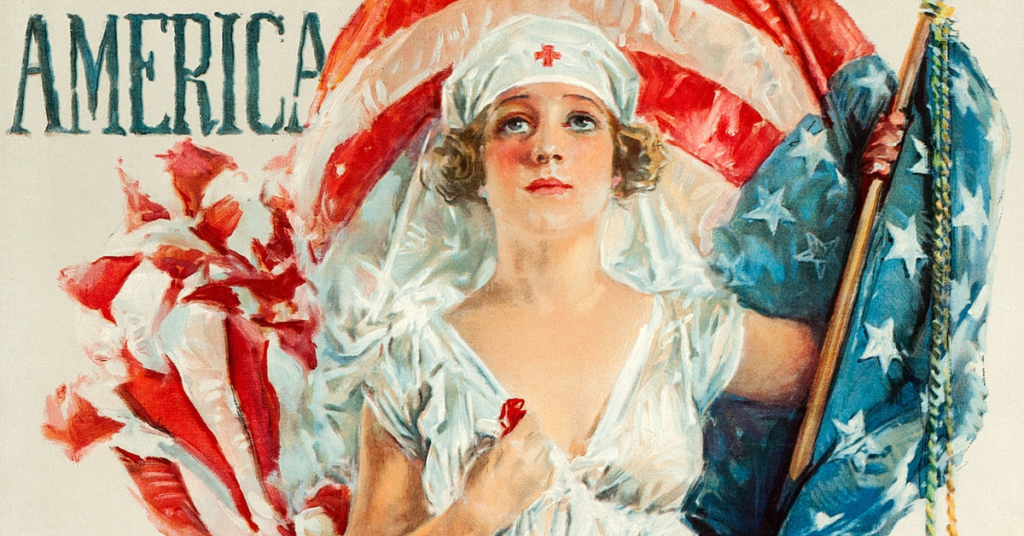The War of Nations, the War to End All Wars, the Good War, World War I, World War II – no matter the name, these conflicts of the early 20th century produced an unprecedented level of widespread destruction. Although a century has passed since the Armistice of 1918, that first colossal clash of nations brought about lasting effects on the course of modern history.
Now, all that survives of the Great War are its remaining artifacts. Chief among those are the rare pieces of propaganda once plastered in every military base and town square. As prolific and inescapable as these propaganda campaigns may have been during both of the World Wars, the posters were never made to last. Few survived to the end of the WWI, and many of the WWII posters saw rounds of pulping and reuse as paper shortages continued for years.
This November, at the centennial mark of the Great War’s end, we at Heritage have the greatest pride in offering more than 60 of these esteemed pieces of history. Many a collector keeps a sharp eye out for the coveted posters found in this auction, some of which are so rare and desirable that we may never offer them again. They are beautiful, provoking and poignant. Designed to mobilize and motivate, these posters served as an engaging medium to connect an entire country to a singular line of thought.
To that end, the importance of propaganda can not be understated.
With no commercial radio and few cinemas in the early 1900s, the printed word was the only channel of communication flowing from coast to coast. It provided a lifeline of information to the most remote areas of the countryside, shaping the minds of those with no other means of interacting with the outside world. Though newspapers served a similar purpose, their cost and required level of literacy became a barrier to some segments of the population. The government needed a simpler avenue of communication to reach as many citizens as possible, and the poster was the perfect medium to do just that.
To catch the eye of the everyday passersby, propaganda pieces tended to display vivid illustrations in full color and gorgeous detail. Several of the greatest commercial artists of the day leaned their talents to this patriotic duty, and collectors value all of their illustrations.
No poster from any war has become more famous than I Want You, created by famous magazine artist James Montgomery Flagg. The definitive poster to have in any WWI collection, Heritage is excited to offer such a piece of history, not only for Flagg’s impressive rendering of Uncle Sam, but also for its permanent place in the American ethos.
Also featured are incredible pieces from talented illustrators like Howard Chandler Christy and J.C. Leyendecker. Named for their creator, the “Christy Girl” posters like I Want You for the Navy and The Spirit of America are always a popular draw for hobbyists. Made to appeal to both male and female patriots, Christy’s incredible illustrations brought in countless recruits to the military and the American Red Cross, and have thus become coveted collectibles. Likewise, J. C. Leyendecker’s Weapons for Liberty bond poster stands as one of the definitive standards for the artist’s line of propaganda posters, inspiring any viewer with his distinctively elegant style.
However, as history has shown repeatedly, anger can be just as effective a tool for mobilization as patriotic inspiration. One of the best pieces available for auction that demonstrates this concept is Harry R. Hoops’ violent caricature of Kaiser Wilhelm II. Destroy This Mad Brute exemplifies the extreme demonization of the German troops encouraged by the Allied narrative, much like Frederick Strothmann’s famous Beat Back the Hun. Of course, not all propaganda painted the fears of the American populace with such hyperbolic barbarity.
An exceptional piece for its beauty and rarity, Fred Spear’s ethereal Enlist portrays victims of the Lusitania’s sinking with a grim elegance found in few other war illustrations. As an additional point of interest for history buffs, this poster once belonged to the famously immense collection of Col. Edward H. McCrahon, the most prolific propaganda poster collector of the 1920s and 1930s.
Although our current lineup of propaganda hails mainly from the 1910s, Heritage also is offering what is now the most famous poster from the Second World War. Despite never seeing use during wartime, the rare Keep Calm and Carry On posters have developed a modern day popularity that would have astounded English subjects of the 1940s. Vastly different in tone from most propaganda from either war, it instead offers direct personal encouragement to the viewer, rather than pressing a patriotic agenda.
In the present, the propaganda of the past has become a glimpse into minds and motivations of our ancestors. The posters featured here are only a few pieces up for auction this November 17-18, alongside dozens of others just as beautiful, impressive and thought-provoking.
